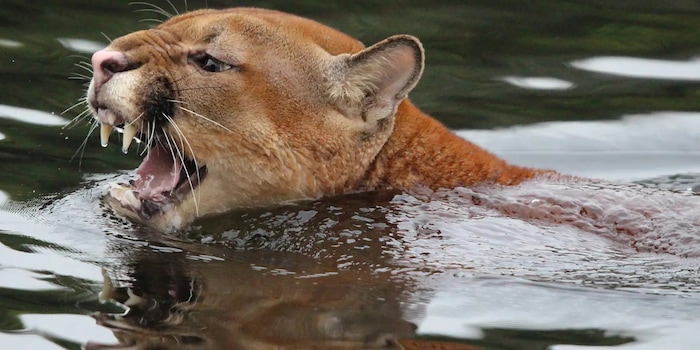
Pumas sometimes swim in the sea
The sea is not the favoured waters for big cats. But for island hopping, pumas also go into the cold Pacific.
Cats are nowhere near as water-shy as they are said to be: tigers in the South Asian Sundarbans or jaguars in the Pantanal even actively enter the water to hunt or colonise new territories. The pumas (Puma concolor) of North and South America, on the other hand, were not previously considered a water-loving species. However, this chapter may have to be rewritten, at least in part, as observations by Mark Elbroch from the nature conservation organisation "Panthera" and his team show. In "Northwestern Naturalist", they describe how pumas actually climb into the cold Pacific Ocean to reach islands off the coast.
As part of the "Olympic Cougar Project", the working group had collected data on how and where the cougars move in the area of the Olympic Peninsula between the US state of Washington and the Canadian province of British Columbia. Although large parts of the peninsula belong to nature reserves, neighbouring towns and the sea were considered barriers for the big cats.
The latter at least needs to be revised: In July 2020, the young male "Nolan", equipped with a transmitter, swam from the east coast of the Olympic Peninsula to the offshore Squaxin Island. Although the distance was only 1.1 kilometres, it was the first proof that pumas can also cover longer distances in the sea. The researchers then searched for further confirmed evidence of cougars on islands in the local Salish Sea - and found evidence on four additional islands, some of which were more than two kilometres from the nearest land.
With this achievement, cougars could therefore reach more than 4,500 islands between Washington and British Columbia, Elbroch and Co. conclude. It is probably mainly young males from the peninsula that venture out into the world in search of food, free territories and females ready to mate.
The journey ended tragically for "Nolan": two weeks after he arrived on Squaxin, he was poached by an unknown person. However, the knowledge he gained could still help his fellow species, for example in the creation of wildlife corridors or bridges that they could use to cross dangerous roads or railway tracks. A project of this kind should benefit the cougars of Los Angeles, for example: In the metropolitan area, the big cats live alongside humans, but struggle every day with the intense traffic of the megacity.
Spectrum of Science
We are partners of Spektrum der Wissenschaft and want to make well-founded information more accessible to you. Follow Spektrum der Wissenschaft if you like the articles.
[[small:]]
Cover photo: © Shannon Mullen / Getty Images / iStock (detail) / Pumas are not afraid of water. But the fact that they venture into the open sea surprised researchers (symbolic image).
Experts from science and research report on the latest findings in their fields – competent, authentic and comprehensible.
From the latest iPhone to the return of 80s fashion. The editorial team will help you make sense of it all.
Show all